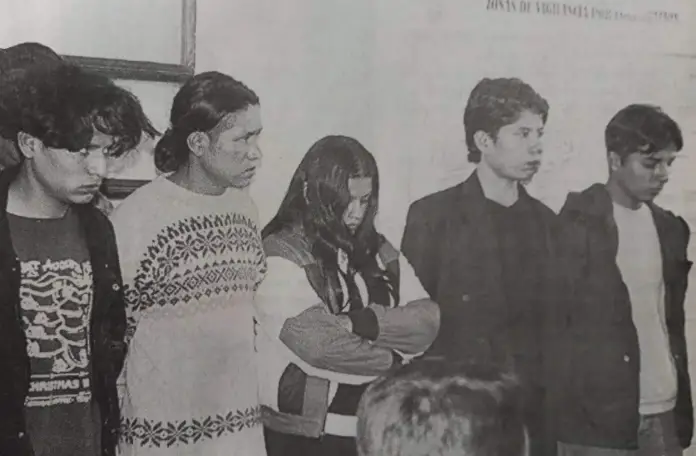
On January 8, 2000, Querétaro woke up to terrifying news: municipal cleaning personnel found human remains in garbage bags abandoned in the Historic Center.
The victim, Blanca Erika Zamora Puga, 14, had been murdered and dismembered on January 7 by people close to her, in a case that revealed ritualistic practices and left an indelible mark on Querétaro society.
Director Manuel Rodríguez announced that the film seeks to put the issue of mental disorders on the table to strip them of all the myths that surround them.
The initial discovery occurred on the corner of Venustiano Carranza and Manuel Altamirano streets, where municipal workers opened a bag containing human parts.
Upon inspecting the garbage collection vehicle, they found two other bags with more remains of the same victim. The community was shocked by the brutality of the crime, which sowed fear and marked a turning point in the perception of security in the city.
The investigations led to the identification of Blanca Erika as the victim and to the location of the main suspects: a group of young people who were part of her social circle.
It was discovered that the previous night she had attended a meeting with friends, who would later be accused of being involved in her death. During the meeting, according to the confessions, those involved carried out a violent act with ritualistic connotations that ended in homicide.
The case was not only surprising because of the violence of the crime, but also because of the cultural implications it generated. The young people involved belonged to an urban subculture known as the “darketos”, related to music and dark aesthetics.
The authorities managed to capture those responsible in less than two weeks. Among those arrested were Teotli Denith García, Enrique García Martínez, Francisco Olvera Escobedo and Ramsés Emmanuel González García.
The first three were sentenced to up to 50 years in prison, although these sentences were later reduced. Ramsés, a minor at the time of the crime, served a five-year sentence in an internment center.
Meanwhile, his co-defendants who remain in the San José El Alto prison are engaged in different activities inside. For example, Enrique “El Henry” García is a distinguished chess player and has been in charge of the library; Francisco “El Crazy” Olvera, who did so as a volleyball player, who shows good conduct, but his release before the sentence of 47 years and seven months has not been considered.
Regarding Teotli Denith García, who is said to be showing considerable progress that at a given moment could help in his release, due to the type of participation that was credited to him in the crime, an evaluation of his sentence has not been authorized.
According to records from the time, Francisco “El Crazy” Olvera Escobedo was originally from Lomas de Casa Blanca; Enrique “El Henry” García Martínez was identified as one of the most influential in the group, and was accused of having alcoholism problems and being the owner of the house where the crime was committed, in Lomas del Cimatario, which was the meeting and party point; Ramsés Emmanuel González García, who was said to be from a ‘well-off’ family; Teotli Denith García, the only woman in the group, was accused of being the mastermind behind the crime.
As a result of the crime, this social group was stigmatized, which gave rise to prejudices towards people unrelated to the incident but who shared similar tastes.
25 years after the incident, the case continues to be remembered as one of the most shocking in the history of Querétaro. The memory of Blanca Erika remains as a reminder of the need to address youth problems from perspectives that prioritize understanding and preventing violence.
Source: oem




